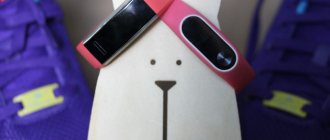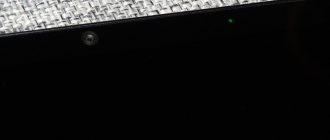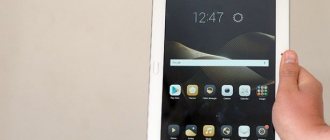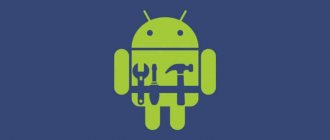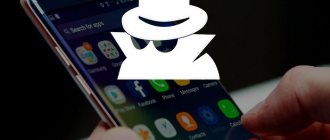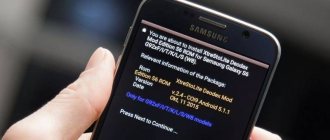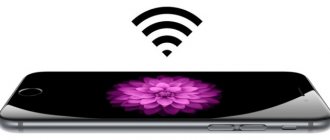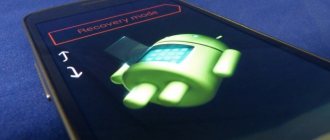At some point, the smartphone market became polarized. Companies like LG, HTC and Sony, which once set the tone, have lost their positions, and for the budget-conscious consumer, the choice of flagship has come down to Samsung and Apple products. At this time, Huawei strengthened its position. Generation after generation, flagships became better, the gap in quality and functionality with the leaders decreased, and at the same time the cost of devices and market share grew. A noticeable leap occurred with the release of Huawei P9 and the start of cooperation with Leica, then Huawei flagship cameras began to shoot noticeably better. After another two years, the new Huawei P20 Pro costs money comparable to other “tops,” and the triple camera is called the best and revolutionary solution. Let's find out if this is actually true.
LineHUAWEI P20 Pro on
Models in the line: 0
- Equipment and accessories
- Design and usability
- Face unlock, scanner and gestures
- Screen
- Platform and speed
- Software
- Screen cutout
- Sound, multimedia
- Cameras with “artificial intelligence”
- Working hours
- ITC.UA rating
Equipment and accessories
Getting to know a smartphone starts with the box and I personally like it when a company tries to please even with the packaging. Unfortunately, the P-series receives original boxes every two years (remember the P8 and P10), so the P20 Pro is greeted with a simple and concise box with standard contents: charger, cable, headset, adapter, paperclip and documentation.
Smartphones that will be officially sold in Ukraine must also be equipped with a case. The company should also bring some original accessories to Ukraine, and let’s hope that alternative options from specialized manufacturers will appear on sale (except for Spigen Rugged Armor, UAG Plasma and UAG Plyo).
Huawei P20 Pro design
not in everything, but in many ways it resembles everyone’s well-known model from Apple – the iPhone X. The first thing that catches your eye is the unibrow on the front surface. This is not surprising, because this year this is a new trend set by the apple, it was picked up by almost all manufacturers in one form or another. But there is good news - this unibrow can be hidden in applications programmatically, and the model will acquire a classic shape. But you need to take into account the fact that when hidden, the screen size decreases to approximately 5.8”.
The body of the model is made of glass, and this already suggests that fingerprints will collect on it very quickly. It is better to always keep a napkin at hand. If in the top ten such a decision on the case was due to the presence of wireless charging and this is logical, then here it is just an interesting design decision. The new product does not support this function. The model is available in branded colors designed specifically for it:
Only the first three colors will be provided on the CIS market.
The potential owner of a smartphone will be faced with a dilemma - either buy a case, but then the unusual color, glass body, and the entire design of the smartphone will not be visible. Or stock up on napkins and patience to periodically erase traces of fingerprints on the case. You will need to remember that the glass case can be scratched very easily.
If we take a closer look at the Huawei P20 Pro , we will see that on the right there is a rocker for adjusting the sound level, an on/off button, and also a record button. On the left is the usual tray for two Nano-SIM cards; expansion of the internal memory is not provided for in the model. There is an IP (infrared) port on top which works great.
Stereo sound is provided using the main stereo speaker located on the bottom edge of the model, the earpiece speaker. If you cover the main speaker with your hand, the sound will be quite quiet. When paired together, the sound is voluminous and of fairly good quality. There is no headphone jack; everything can only be connected via USB Type-C and adapters. The sound quality in the headphones is excellent.
Huawei left a fingerprint scanner on the front surface under the screen Moreover, in limited lighting, this technology does not work very well. The scanner itself can be used as an application control button, and if necessary, you can display the usual control buttons on the screen.
Design and usability
With Huawei P9 and, especially, P10, it was clear how the company is trying to distinguish its smartphones from competitors due to the variety of not only colors, but also body textures. When creating the Huawei P20 Pro, on the contrary, they decided to follow a more familiar and understandable path - they created a glass flagship with a metal frame.
Fortunately, some experiments were necessary, and due to the unique iridescent Twilight (purple) color, the device stands out from similar models - no one has done this before. In Ukraine, the smartphone will be sold in two body colors - purple and black. The latter also looks interesting and has a matte frame. In general, the entire color palette this time turned out to be successful, because both the blue and pink options look beautiful.
Otherwise, the P20 Pro is perceived as neutral. The edges are rounded, and we tried to make the transition between glass and metal as smooth as possible. The power and volume keys are on the right, the slot for two NanoSIMs is on the left, and the Type-C connector is on the bottom. Also included were not only logos and camera optics parameters, but also service information with certification marks. Without the latter, everything would look a little neater.
In terms of ease of use, the Huawei P20 Pro does not stand out as anything special. The case is medium in size and can be operated with one hand. Like all glass smartphones, it often feels slippery, and the “back” collects fingerprints well. You should be especially careful if you are used to talking with your phone pressed against your cheek with your shoulder - in this case, it may accidentally slip out.
All three cameras protrude above the surface of the body, especially the main and tele-modules, covered with a common glass. Oddly enough, this does not lead to noticeable swaying of the smartphone lying on the table.
Given the glass body and protruding cameras, many will probably want to get a case, although on the test device, after two and a half weeks of relatively careful use, only a couple of micro-scratches appeared on the bottom.
We also note the presence of dust and moisture protection according to the IP67 standard - the smartphone can be “bathed” in fresh water, which has become a standard feature for most flagships.
⇡#Design, ergonomics and software
Smartphone design, while leaving little room for artistic imagination, remains as important a battleground for premium devices as cameras. And Huawei is definitely losing this battle. Yes, the task before the designers was initially difficult - to reduce the frames around the display as much as possible (as fashion says), while at the same time preserving individuality, corporate style and introducing some features that are characteristic of them into the appearance of the P20/P20 Pro. Alas, the result is precisely an attempt to sit on several chairs, visible to the naked eye.
The cutout put into use by Apple (popularly called the “unibrow”) right in the middle of the top edge of the display is combined here with a hardware “Home” key located at the bottom, and the IP67 protection class declared for the P20 Pro is with the absence of a mini-jack. When will Chinese technology developers understand that not everything Apple does is equally useful! You can make a secure phone by keeping the mini-jack in place - ask Samsung or Sony how if you are at a dead end.
All this is supported by a not very neat-looking “sandwich” of the front panel, consisting, as usual, of laminated glass. The situation is somewhat corrected by the beautiful back panel, made of mirror glass, which, of course, collects your every fingerprint, but when wiped, it looks really cool. Especially not in the black version, as in our case, but in the blue or gradient version (Pantone). This P20 Pro is truly capable of impressing, but the eclectic, recycled and slightly scruffy front panel brings the score down.
Huawei P20 Pro, front panel: on top – a cutout with a status indicator, front camera and speaker, on the bottom – a hardware but touch-sensitive Home key
The edges are made of metal with small plastic inserts for the correct operation of the antennas - this is a common solution.
Huawei P20 Pro, rear panel: three camera lenses and dual LED flash. A laser contrast autofocus assistant is also hidden in the protrusion between the cameras.
There is something wrong with the oleophobic coating of the display, as is the case with Huawei - the front panel is covered with a protective film by default, and it is not recommended to peel it off, since fingerprints stick to the screen.
Huawei P20 Pro, left side: slot for two nano-SIM carrier cards
Huawei P20 Pro, right side: power and volume/camera shutter keys
Huawei P20 Pro, as befits a serious smartphone of the 2018 model year, combines what previously seemed incompatible simply by physical laws - a huge display and relatively small dimensions. The 6.1-inch screen is “packed” into a body with dimensions of 155 × 73.9 × 7.8 mm – yes, the P20 Pro is larger than the iPhone X, but there is also a larger display. Be that as it may, the gadget fits into any pocket and does not cause serious discomfort when used. At least we are all (well, almost) already used to it. Nothing unusual, just another “spatula”.
Huawei P20 Pro, top edge: microphone and IR sensor
Huawei P20 Pro, bottom edge: USB Type-C port and speaker grille (to the right of it)
Among the unusual solutions, I would also like to note the round earpiece - it really looks good, and saves space on the cutout (as a result, it is noticeably smaller here than on the iPhone). We've already seen something like this (including on budget smartphones like Wileyfox), but it still looks non-standard. Otherwise, there are no surprises: hardware keys are on the right edge, a SIM card slot is on the left, and the main speaker is on the bottom. The sound here, by the way, is stereophonic - this speaker works in tandem with the same round speaker.
To control the gadget, you can use both the on-screen navigation panel, consisting of three standard Android elements, and exclusively the “Home” key. It is here, as has long been the custom, touch-sensitive and reacts both to single touches and to various gestures - their purpose can be changed in the settings.
Huawei P20 Pro offers both of today's main options for verifying your identity when unlocking the device. There is both a fingerprint scanner built into the Home key and a facial recognition system. A special sensor is not used for this - only a software part that uses the capabilities of the front camera. At the same time, recognition occurs very quickly, even in the dark - to identify the user, the camera has enough light from the screen, which in this case remains on. Yes, in theory, there is not the same reliability and security that the system of a dot projector and IR camera in the iPhone X provides, but you most likely will not notice the practical difference.
If you wish, you can use both facial recognition and a fingerprint scanner - just for different purposes. One, for example, to unlock the device, the second - to pay via Google Pay or access your personal space.
Huawei P20 Pro: Screenshot
View all images (25)Huawei has not prepared a new version of EMUI for the release of the P20/P20 Pro - here is the same EMUI shell of the eighth version, which debuted back in the fall on the Huawei Mate 10 Pro - you can read more about it in the review of this smartphone. In a nutshell, it's a slightly specialized shell, but it works extremely smoothly. In my opinion, it is faster than any of those on the market - Huawei smartphones are sometimes faster than their more powerful competitors in terms of the speed of redrawing screens and opening applications. The P20 Pro has exactly this situation - in terms of speed, it is quite on par with Google Pixel 2 and Samsung Galaxy S9. Energy efficiency is also not bad, although the Always-On Display function added here (after all, the OLED screen allows you to do this) eats up more charge than Samsung or LG smartphones - 10% is easily lost overnight.
Huawei also promises to reduce the effect of smartphone fatigue due to improved work with neural networks - these are the same promises that were made when releasing the Mate 10 Pro. It should not lose speed and not accumulate errors over time, giving after six months or a year the same operating sensations as immediately after purchase. Naturally, it was impossible to reliably verify these promises during the relatively short-term testing of the P20 Pro.
The P20 Pro also has its own specifics. It concerns - as is easy to understand just by looking at a smartphone - working with the “cutout”. If you're annoyed by the sight of that "pier" bursting into a single space of the screen, with a status bar to the right and left of it, you can fix it by simply painting the status bar black. It looks a little wild, but perfectionists might like it.
Face unlock, scanner and gestures
Huawei P20 Pro has received a face unlock feature using the front camera. This unlocking method turned out to be quick and convenient to use; the camera recognizes the owner well even in the twilight or wearing glasses, and failures occur only in the presence of bright backlight or in the dark. In the latter case, after a few seconds, the screen brightness increases to “illuminate” the face.
The smartphone also retains the usual fingerprint scanner located under the screen. It seems that it works even faster than in previous Huawei smartphones. The location of the sensor is chosen as successfully as possible - it is convenient to unlock the device both while holding it in your hands and when it is lying on the table.
As before, the sensor can be used for control instead of on-screen keys. Well, Huawei also implemented an additional control method, when the buttons are replaced with an oblong strip on the screen - the same gestures work with it as with the scanner. The latter option is reminiscent of the control scheme of the iPhone X and the similarities do not end there.
Equipment
The device is supplied in a standard white cardboard box. The packaging displays the name of the device and its technical characteristics. Opening the box, you will find that the set, in addition to the Huawei P20 Pro smartphone, contains a bonus: the box contains a headset. The kit includes a standard power supply, a USB Type-C cable, a headphone adapter, the necessary documentation, and a paperclip for opening the SIM tray. Some smartphones may also come with a gift case.
Screen
The Huawei P20 Pro has a 6.1-inch OLED screen with a resolution of 2240 by 1080 pixels. Due to the presence of the cutout, the display is slightly elongated in height; it has proportions of 18.7 to 9. The screen is covered with glass with an oleophobic coating and rounded edges, and a protective film is glued to it from the box.
According to our measurements, the maximum screen brightness when filled with white is 409 cd/m², and the minimum is 3.7 cd/m², but do not forget that in OLED matrices the brightness changes dynamically and depends on the displayed image, so the display “shines” when in use brighter, especially on a sunny day outside.
"Normal" color mode
Calibration was performed at the usual good level, all parameters are normal, and the color gamut depends on the selected color rendering profile. In normal mode, color rendition is close to IPS matrices, and the coverage is slightly wider than the sRGB space.
Vivid color mode
Vivid mode provides wider coverage and richer colors, making the screen comparable to other OLED and some IPS displays. There is also the possibility of manually adjusting the color temperature, a function for automatically adjusting the temperature depending on the lighting, an eye protection mode and the ability to increase sensitivity for operation with gloves.
According to subjective impressions, I liked the screen. Full HD+ resolution is enough to make the image smooth, only the most eagle-eyed can see individual pixels. Having a variety of settings allows you to customize everything for yourself, although in my case the default settings turned out to be quite suitable. In general, it’s a screen familiar to flagships, with no complaints.
Display
The presence of a “bang” makes Huawei P20 PRO similar to almost all new flagships of 2021. This cutout at the top of the screen allows you to place a camera, earpiece and a set of sensors in it, which is extremely difficult to do with a frameless design. Going the route of Xiaomi MIX and making a camera at the bottom, as it seems to us, would be a much worse idea than simply repeating what was shown in the Apple iPhone X. On the screen strips to the right and left of this cutout there are icons for network status, battery charge, etc. d. Moreover, in the settings you can hide this cutout; in fact, a black background is simply created for these stripes, but it looks as if there really is no cutout. And this, as it turns out, is very convenient - network statuses and other service information do not take up part of the screen, which gives you more space for displaying images.
The display diagonal is 6.1 inches, resolution – 2240x1080 pixels (408 PPI), aspect ratio 18.7:9, the matrix is made using OLED technology with a Pentile structure in the form of “Diamond pixel”.
The picture is juicy and pleasing to the eye, there is a large reserve of brightness, and in the screen settings you can adjust the color temperature to your liking. The smartphone also has an eye protection mode, in which the image is displayed in warm colors, eliminating the blue tint, which can negatively affect vision. Multi-touch supports 10 touches.
Platform and speed
The smartphone is built on the proprietary platform Kirin 970 and at the start of sales will be available in a single version with 6/128 GB of memory. There is no possibility of expansion using memory cards; the slot is not “hybrid”. The SoC is made using a 10 nm process technology, is equipped with a special NPU module for implementing “artificial intelligence” functions and is already familiar to us from the Mate 10 Pro, we also talked about it in a separate report.
The entire set of modules required for flagships is available: NFC, dual-band Wi-Fi, Bluetooth 4.2 with apt-X HD, Type-C (USB 3.1), as well as an infrared port for controlling household appliances. The smartphone supports the simultaneous operation of two SIMs in a 4G network, and is also equipped with a fast modem (Cat 16/Cat 18, up to 1.2 Gbit/s) - within the first Ukrainian LTE networks we were able to see speeds of up to 95 Mbit/s.
In benchmarks, Huawei P20 Pro shows results at the level of current flagships, although it is slightly inferior to devices on Snapdragon 845 in the same Antutu. When running tests cyclically, the smartphone gets a little warm, but during normal use, even during games, there is almost no heating.
The speed of operation in actual use is excellent - there are no complaints about the smartphone. Everything is also good with games - PUBG Mobile, Guns of Boom, Modern Combat 5, Asphalt Extreme worked smoothly and without stuttering, although it is believed that developers do not adapt their titles very well to the Mali-G72 MP12 GPU (and Mali accelerators in general).
Wireless interfaces
Huawei P20 PRO supports almost all modern wireless data transfer interfaces. The signal remains strong and does not lose connection. There is support for the latest version of Bluetooth 4.2, Wi-Fi (in the 2.4 and 5 GHz range), MIMO 2×2, NFC. The USB Type-C connector supports connecting external devices in USB OTG mode.
The navigation module works reliably with GPS and domestic Glonass. Detection of satellites and calculation of location occurs in just a few seconds. During a cold start, the first satellites are detected within tens of seconds.
Huawei P20 PRO copes with its direct responsibilities perfectly. The speaker is of high quality, the interlocutor can be heard loudly and clearly. The person talking to you can also hear you well, the microphones are highly sensitive, and thanks to the noise reduction system, extraneous noise is cut out. The vibration alert is powerful and feels great even in a jeans pocket.
Software
Huawei P20 Pro runs Android 8.1 and EMUI 8.1. The eighth version of the proprietary interface offers an updated design for many standard icons and stands out with support for standard Android 8.1 features such as shortcuts available by pressing and holding application icons.
Additional EMUI functionality has not changed noticeably. As before, you can choose to display the interface with or without a separate application menu, swiping down on the desktop brings up a convenient search for your smartphone and applications, adjusts the location and number of icons in the notification panel, and the screensavers on the lock screen can change automatically.
Once again, I can repeat that I personally like EMUI in terms of ease of use, but I would not refuse a pure Android style theme created by Huawei - similar ones can be found on forums and in the Play Market, but they are not all made carefully enough. This desire is due to the fact that by default in EMUI, many icons and even interface elements are very reminiscent of iOS - settings, clock, voice recorder, “lock” on the lock screen when unlocking by face, camera application, and so on. At the same time, after the final customization, all this is no longer so noticeable.
Memory and memory card
The smartphone received 128 GB of internal memory and 6 GB of RAM. LPDDR4 SDRAM operates at the highest speed, namely 7700 MB/s. The built-in memory of the UFS 2.1 type has a read speed of approximately 500 MB/s, and a write speed of 190 MB/s, which are also quite high, although not record-breaking figures.
The main drawback is that memory cards are not supported, but 128 GB of memory should be enough to install “heavy” applications and games, save captured videos, store photos, music and movies. In addition, due to the absence of memory cards, two SIM cards can be installed simultaneously in the tray. This can be seen as a small plus.
Screen cutout
Many flagships at the beginning of the year acquired a cutout in the screen in the style of the iPhone X, and the P20 Pro was no exception. The main thing you need to know about it is that the cutout is small and does not affect functionality or ease of use. The status bar contains a normal number of icons; depending on the application, the status bar is colored in the color of the program or turns black. YouTube video stretches to the cutout.
For those who can’t live with the notch (but will still buy the Huawei P20 Pro :) ) they’ve added a hiding function - the areas on the left and right will turn black and only white icons will be displayed on them, which looks quite interesting. Depending on the viewing angle, the cutout may be completely invisible and merge with the frame.
Battery life
Huawei P20 PRO is equipped with a non-removable battery with a capacity of 4000 mAh. Such capacity can rarely be found in flagship solutions. And this is precisely what ensures almost two days of battery life for the smartphone. The mode of use is standard - several conversations on the phone, instant messengers, surfing the Internet, checking email, etc.
The smartphone supports Huawei SuperCharge fast charging, but the test unit arrived without the included AC adapter, which did not allow us to test the charging time of the smartphone. The smartphone is not compatible with fast charging of other SoCs.
Sound, multimedia
Huawei P20 Pro also boasts the presence of stereo speakers; the role of the second speaker in it is played by the earpiece. The smartphone sounds loud and clear, but the sound is slightly lacking in volume and bass - the company has produced generally good, but not the best of similar speakers.
There are no comments regarding the vibration and dynamics during calls. There is a volume reserve for comfortable communication in most conditions.
In general, there are no problems with playing music on headphones. Bluetooth supports current codecs (aptX HD and others) for transmitting high-quality audio - it seems that by massively abandoning the usual mini-jack, companies are pushing us towards exactly this way of listening to music. I have already followed it, and was completely satisfied with the performance of the P20 Pro paired with a Shure SE215 connected to a MEE audio BTX1.
When using an adapter and regular headphones, the Dolby “enhancer” works by default, which replaced the previous DTS and Histen. The Dolby add-on tries to make the sound more rich and voluminous - depending on the music, the sound can become either better or slightly worse. Without Dolby, the sound becomes neutral and even “dry”, analytical.
Sound
The device received two speakers at once, which provide stereo sound: one is multimedia, and the other is conversational. In general, the sound turned out to be of high quality; the sound volume of the Huawei P20 Pro is also at a high level. There are no complaints about the speakers.
The smartphone supports Dolby Atmos technology, which improves sound quality and has deep settings.
The speaker also turned out great, it has built-in noise reduction technology. It’s a pleasure to talk with your interlocutor; you can hear him clearly, clearly and, most importantly, loudly.
The sound when using headphones is also at the same level - thanks to Dolby Atmos. The technology allows you to select the desired codecs and change dozens of other settings, making the sound almost perfect.
Cameras with “artificial intelligence”
Huawei P20 Pro received three main cameras at once: a main sensor with a resolution of 40 MP (f/1.8, 27 mm), an additional 8 MP with a telephoto lens (f/2.4, 80 mm) and a monochrome 20 MP (f/1.6, 27 mm). The camera system is also equipped with laser autofocus with an increased operating range (up to 2.4 meters) and a color temperature sensor.
How it works? The main camera is equipped with a special filter (Quad Bayer Structure) and to obtain information about one pixel in the image, information from several neighboring pixels is used, so by default the smartphone takes pictures with a resolution of 10 megapixels. The monochrome module, due to its lighter optics and wide dynamic range, is used to obtain additional information about lighting. The telephoto lens works when zooming.
The sensors are connected to hardware, namely the NPU module, which is responsible for scene recognition, autofocus, and so on. In practice, AI functions can work not only in the camera, but their work is best seen when shooting.
Generally speaking, this whole tandem of technologies works great - the Huawei P20 Pro camera is truly one of the best, if not the best solution on the market at the moment. Periodically, the software lets you know that it has recognized the scene and the image on the screen may change slightly depending on the presets specified by the manufacturer.
Blur background
Most images have very wide dynamic range, as if they were taken in HDR mode, and good detail. However, pattern recognition can also give somewhat strange results; when shooting the same scene, you can get noticeably different frames. Therefore, it is good that scene recognition can be completely turned off in the settings or when shooting a specific scene, although in general there is no such need.
Examples of successful (and not so successful) scene recognition (AI) work
When shooting at night, the multiple exposure mode is often, but not always, used, when the device takes one photo for 4 seconds - during this time it “glues” several frames together. The nice thing is that most photos are sharp in this case, which allows Huawei to claim that they have implemented long-exposure photography without a tripod, although this is not a technically correct claim. This mode can be activated separately, it is called “Night”.
Long exposure photos
Also noteworthy is the ability to shoot with a five-fold zoom with virtually no loss of quality. If the AI decides that you are shooting macro, the camera switches to shooting at 2x zoom.
Examples of zoom operation
There is also the ability to take frames at a resolution of 40 megapixels, but there is little practical sense in it - in this mode the AI functions work differently, there is no zoom option, no high ISO mode, and so on.
Photo in 40 MP resolution
They didn’t forget about video recording, which Huawei had problems with before. In particular, when shooting Full HD (30 fps), AI stabilization works. The shooting angle becomes narrower, but the picture turns out to be perfectly stabilized even when walking.
When shooting Full HD (60 fps) and 4K (30 fps), AI stabilization does not work, but in the second case, the image differs minimally from the stabilized video, but the videos turn out “jerky.” There is also a slow motion mode in HD at 960 fps, but its performance still leaves much to be desired.
The camera application itself was also redesigned, which began to closely resemble the one on the iPhone. Now switching between the main shooting modes occurs using the “wheel”, the extreme position of which (“More”) hides additional modes for shooting monochrome photos, HDR, panoramas, and so on.
The front camera with a resolution of 24 megapixels (f/2.0) lacks autofocus, but takes self-portraits of decent quality. It (like the iPhone) has a mode for emulating studio 3D lighting.
The original pictures and videos can be downloaded to Google Drive.
Appearance
In the new generation of Huawei smartphones, they abandoned the Plus prefix in the name, and it’s difficult to call a Plus smartphone, the size of which, despite the 6.1-inch diagonal, is not much larger than the 5.2-inch smartphones of previous years. Due to the frameless screen, the company was able to significantly reduce the dimensions.
The screen is the main new design element. Almost the entire front side of the smartphone is occupied by a large 6.1-inch OLED screen. Thin frames, a small strip under the screen with a fingerprint scanner located in it, which can also act as a control button. The upper part of the screen is almost close to the borders of the smartphone, with the exception of a small part in the middle, which houses the proximity and light sensors, the earpiece and the front camera. It is this protrusion that is usually called either a bang or a unibrow.
By the way, pay attention to the corners of the screen, the screen itself, and not the smartphone - they are slightly rounded, which gives the screen a very pleasant and unusual appearance.
Looking ahead, let's say that you can hide the above-mentioned unibrow (in the manufacturer's terms this is called a “controller”). In the screen settings, you can select an option in which service statuses will simply be displayed on the bars to the right and left of this controller, and the bar itself will turn black. This allows you to save useful screen area by displaying all network statuses, wi-fi, battery charge, etc. in these areas. It is in this mode that it is most pleasant to work with the phone, and it looks nicer than just a smartphone with a cutout in the screen.
There are three cameras on the reverse side. The main one is 40 MP with an RGB sensor, the additional one is 20 MP with a b/w sensor, and the third is an 8 MP camera with a telephoto lens that allows you to create some kind of optical zoom. But we'll talk about the cameras themselves later. Below them is a flash and the proud inscription LEICA. There is also additional information about the focal length of the camera; when converted to EGF, it turns out to be 27-80 mm (three times zoom), at 27 mm the aperture is f/1.6, and at the telephoto range it is 70 mm at f/2.4. The back of the smartphone is made of tempered glass, under which The housing is blue. Also, Huawei P20 Pro is presented in black and a very interesting color option, called Master AI (professional photo assistant). Master AI determines what exactly you are photographing, what the scene is, and, based on this, sets the preset camera settings. Moreover, it determines quickly and accurately. Point the camera at a cat - the cat message pops up and the program adapts to shooting animals; portrait mode is determined in the same way, for example, shooting food, flowers, landscapes, etc. We must pay tribute to this assistant - the pictures really turn out to be of higher quality and more interesting.
ISO test
ISO 400
ISO 800
ISO 1600
ISO 3200
ISO 6400
For a smartphone camera, the result is simply excellent. Thanks to this, as well as an improved image processing algorithm, the camera is able to shoot even at night. The “night shooting” mode allows you to increase sensitivity to ISO 102400, but this is achieved through software - the smartphone takes several pictures, then combines them into one using a special algorithm to reduce noise and increase detail. The idea of such a solution is not new, but we have not previously encountered its use in smartphones.
Sample pictures
Panorama mode
Wide aperture mode
When this mode is turned on programmatically, the effect of a shallow depth of field is achieved, and you can also change the focus point and depth of field on already captured photographs. The aperture range is listed as f/0.95 to f/16 equivalent. The aperture value can be set both during shooting and after. You can also change the focus point after shooting. In addition, you can not only blur the background, but also apply one of the available filters to it. The principle remains the same - everything that is not included in the depth of field changes, but the subject itself remains unchanged.
The mode works both for color photographs and in monochrome mode. Most photos are pleasing to the eye, with just the right amount of blur, but too low an aperture can make the image look unrealistic; too much and harsh blur looks sloppy and turns the viewer off. Therefore, this mode must be used carefully, choosing the right angle and blur strength.
Monochrome mode
Monochrome mode was one of the main features of the Huawei P10, and remains so in the Huawei P20 PRO. A regular color sensor contains special light filters that cut off part of the transmitted light, but with further processing and interpolation it allows you to collect a color image. But if these filters are removed, we will only get the brightness component of the picture. This allows you to increase photosensitivity and expand the dynamic range of the image. But, naturally, at the output we will get a black and white image.
In the world of large cameras, there is only one modern camera with a monochrome sensor - the Leica M Monochrom. The solution is highly specialized and expensive. You can have different attitudes towards black and white photography, but in certain situations, black and white photographs look more advantageous than color ones.
Huawei P20 PRO allows you to take black and white photos in resolutions of up to 20 MP (you can also select 10 and 7 MP in the settings). The result is excellent, detailed images with an acceptable noise level even at high ISOs.
Video recording
The maximum video resolution is 4K @30 fps, Full HD is available at 60 fps, and 30 fps. Separately, in the camera menu, you can select the “Slow motion” item, which has several options for shooting slow motion video:
- 32x – shooting HD video at 960 frames per second, which with standard playback allows you to slow down the image 32 times, but with a significant limitation: it must be light enough to provide such a short shutter speed for individual frames, and shooting takes only a quarter of a second.
- 4x and 8x – slowdown by 4 and 8 times, respectively, shooting in fullHD without a limitation on shooting time.
The optical stabilizer in video shooting mode only works in Full HD @30 fps mode and in lower quality modes. There are no complaints about video shooting - focusing is confident, there are no jerks, the picture is bright and detailed.
Front-camera
The front 24-megapixel camera with autofocus and f/1.9 aperture keeps up with the high quality bar set by the main camera block. Photos are obtained with a good level of detail, the picture is clear and rich. The only unpleasant moment is the photo “beautification” mode; the smartphone tries to smooth out skin imperfections, which sometimes negatively affects the picture. Moreover, despite the fact that the setting of this function is set to zero, the effect of improving the skin still remains noticeable.
Working hours
The smartphone has a built-in 4000 mAh battery with support for proprietary SuperCharge fast charging technology. The company promises up to two days of operation under average load. In half an hour the device gains about 55% charge, in an hour - 90%, and a full charge takes 1:20. In the PC Mark test, the smartphone showed a result of 8 hours 25 minutes.
Operating time during normal use depends on many factors. For example, my usual usage scenario includes constantly synchronizing two Google accounts, running 3-4 instant messengers in the background, using Wi-Fi and mobile Internet (3G and 4G is often used to watch videos on the way to work), listening to music via Bluetooth headphones and always connected Pebble.
In this mode, the worst result I have seen is 4 hours of active screen per day of work or 5 hours of active screen per day. The best is 6 hours of screen time per day. If you turn off the smartwatch and 4G (the quality of LTE coverage in Kyiv still leaves much to be desired), then you can count on 6 hours of use with a day and a half of work. If you use the power saving mode, which disables synchronization of Google accounts and slightly reduces the average screen brightness, you can achieve two days of operation on a single charge.
You can also disable the background operation of individual applications, activate the black interface theme and “smart screen resolution” - all this slightly increases the operating time. In general, the Huawei P20 Pro turned out to be quite autonomous; you just want to get even more from a flagship with one of the most capacious batteries.
5
ITC.UA rating
Pros: design, triple cameras with AI and useful additional shooting modes, performance, good screen, capacious battery, memory capacity
Cons: price, no mini-jack and MicroSD slot
Conclusion: Over the past couple of years, we have become accustomed to the fact that new flagships do not receive many new features compared to their predecessors, and this state of affairs is perceived as normal. In this vein, the main advantage of the Huawei P20 Pro is that the company was able to take several steps forward compared to last year's models. Does the smartphone have critical flaws? No. But their competitors don’t have them either - the market leaders have long gotten rid of “childhood diseases.” Therefore, the only downsides are the expectedly high price and the usual refusal of mini-jack and memory cards. The new smartphone feels truly new, and not a slightly improved version of what we've seen before, and the P20 Pro doesn't look dull compared to its competitors - it's the first device with three cameras, and their number is consistent with the quality of the resulting images. The presence of a unique Twilight color should also play a positive role, because everyone uses identical body materials, and the user needs to be surprised with something. Huawei were able to do this, for which they receive a well-deserved “Editor's Choice”.
Specifications
| HUAWEI P20 Pro 6/128GB Twilight (51092FFA) Notify when available | |
| Type | Smartphone |
| Pre-installed OS | Android 8.1 + EMUI |
| RAM, GB | 6 |
| Built-in memory, GB | 128 |
| Expansion slot | — |
| SIM card type | Nano-SIM |
| Number of SIM cards | 2 |
| CPU | HUAWEI Kirin 970 + Mali-G72 MP12 |
| Number of Cores | 8 |
| Frequency, GHz | 2,3 |
| Battery | 4000 mAh (non-removable) |
| Diagonal, inches | 6,1 |
| Permission | 1080 x 2240 |
| Matrix type | AMOLED |
| PPI | 408 |
| Dimming sensor | + |
| Main camera, MP | 40 (f/1.7) + 20 (f/1.6) + 8 (f/2.4) |
| Video shooting | + (4K) |
| Flash | + |
| Front camera, MP | 24 (f.2.0) |
| WiFi | 802.11ac |
| Bluetooth | + (4.2, apt-x) |
| GPS | + |
| IrDA | + |
| FM radio | — |
| Audio jack | — |
| NFC | + |
| Interface connector | USB Type-C |
| Height, mm | 155 |
| Width, mm | 73,9 |
| Thickness, mm | 7,8 |
| Weight, g | 180 |
| Protection from dust and moisture | + |
| Type of shell | monoblock (non-separable) |
| Housing material | metal/glass |
| Case color | blue/turquoise |
| Keyboard type | screen input |
| More | accelerometer, proximity sensor, gyroscope, Hall sensor, compass, fingerprint scanner, fast charging support |
Specifications
The technical specifications of Huawei P20 Pro are presented in the following table.
| Processor platform | HiSilicon Kirin 970, Cortex 4 A73x2360 MHz, 4 A53x1800 MHz |
| GPU | Mali MP12 G72 |
| Screen | OLED, 408 ppi, 2240×1080, OLED technology without air gap |
| RAM/ROM | 6/126 GB |
| SIM | 2, slot without memory card support |
| Connection | GSM, WCDMA |
| Data | GPRS, EDGE, 3G, 4G LTE |
| Wireless technologies | WiFi, Bluetooth, NFC, IR port |
| Main cameras | 40 MP (color) + 20 MP (monochrome) +8 MP (color, optical zoom) |
| Camera front | 24 MP |
| Sensor block | Magnetic compass, proximity, acceleration, counter, lighting, gyroscope, ultrasonic fingerprint |
| Battery | Non-removable 4000 mAh |
The device weighs 186 g and has dimensions of 155x74x7.8 mm.
Huawei P20 Pro
Why do you need an Android smartphone that cannot be flashed?
Many users support the idea that Android 's EMUI is one of Huawei's most important problems. Most competitors managed to experiment and abandon their own developments in favor of “pure” Android.
Only Xiaomi and Huawei remain. Let's not forget that the first one is, in fact, a software developer, while Huawei engineers primarily worked on hardware solutions.
This may well explain the noticeable lags in earlier versions. Forgivable? Of course, if the update comes every 2-3 weeks, like Xiaomi. But things are bad .
This is expressed in the speed of operation and the smoothness of the interface. And the minimal difference between EMUI and stock Android: in fact, it is a launcher, a visual shell for displaying the desktop and settings.
It would be great to install a custom bootloader and an alternative system on this potentially interesting phone. I think the smartphone would become noticeably more interesting.
From September 2021 on Huawei P10/P20/P20 Pro it is impossible to unlock the bootloader, get root and install custom recovery. Delirium that limits functionality.
This is prohibited for the same reasons as Xiaomi. But the latter allow any intervention according to the instructions, even a “brick” can be lifted. In the case of Huawei, any manipulation is prohibited.
Why then use Android at all if you deprive the user of editing it? And marketers manage to make a “feature” out of this political decision, saying that the smartphone receives additional protection.
A lot of important things were forgotten in the race
As with many other things. Little things show that Huawei was in a hurry when developing a smartphone that was supposed to show who’s boss. The same reason explains the incredible abundance of materials on all kinds of resources. The brand war leads to disastrous results.
A nuance: of all the brands, only Xiaomi manages to produce adequate smartphones in response to Apple ( Mi 5s Plus ). Only thanks to low prices and luck. Other vendors either waste a lot of time or create pretty lousy copies.
It may seem that Bluetooth 5.0 is not needed today. But when music in wireless headphones discharges the Huawei flagship 2 times faster than some OnePlus , it becomes uneasy.
For the sake of decency, we could also remember about wireless charging. But it remains for Huawei Mate 10 Porshe Edition .
The absence of accelerated communication technologies is also surprising. The actual transmission speed of the P20 Pro modem is inferior to devices based on Snap 845. Unpleasant.
P20 Pro camera: three-lens system test
The P20 Pro has three cameras on the back, which offer some interesting features for fast photography enthusiasts. As the main camera, the Chinese manufacturer uses, as Nokia once did in its Pureview 808 and Lumia 1020, a matrix with an extreme 40-megapixel resolution. But at the same time, Huawei is integrating a smaller sensor here than Nokia: in the P20 Pro it measures 1:1.7 inches, while the bulkier Pureview with 1:1.2 inches offers a much larger sensor area.
To improve image quality especially in twilight, the system takes a 10-megapixel image as standard, thus combining information from 4 points into one pixel of the final image. Huawei calls it Light Fusion, but usually people talk about oversampling in this case. The process improves light sensitivity and reduces noise levels. One pixel in a certain sense turns out to be large - 2 microns. Typically, mobile phone cameras boast 1.2-1.4 microns.
Three lenses make the camera very flexible for those who love quick photos
The main camera is supported by a 20 megapixel monochrome matrix - its lens is located directly above the LED flash on the back of the smartphone. This sensor, due to the absence of an RGB filter, is more photosensitive and should improve rendering in twilight shooting scenarios. Alternatively, it allows you to get extremely clear black and white photos without any filter tricks.
Under the topmost of the trio of lenses is an 8 MP telephoto sensor, which shoots at 3x magnification. The higher level of detail compared to enlarged standard shots is very noticeable. The dual-lens systems of other smartphones such as the iPhone X or Galaxy S9 Plus offer “only” 2x zoom. This way, you can shoot more distant subjects with the P20 Pro.
The size of the f/1.8 lens hood for the main camera is decent. The monochrome sensor, thanks to its larger aperture, f/1.6, receives more light, and the telephoto lens with an f/2.4 hood receives a little less.
Illustration: Chip.de
Do you believe in Chinese luxury flagships?
Huawei will announce Russian prices later, but the European P20 with 4/128 GB of memory costs 46 thousand in rubles. In comparison with the just released Xiaomi Mi Mix 2s and its 30 thousand “in the base” it is not cheap, but Xiaomi takes worse photographs and is not waterproof, and its main advantages are a screen without a “notch” and a faster processor. True, if we talk about the “gray” market, in Russia you can get rear cameras of the Samsung Galaxy Note8 that are just as fast and almost as good in quality for 45-50 thousand. But if the official Russian price is the same, you will get a smartphone that takes better photographs than the iPhone X (minimum 77 thousand rubles) and is close in shooting quality to the Samsung Galaxy S9 (60 thousand rubles), but runs on battery longer and costs less repair (if you suddenly break the display).

